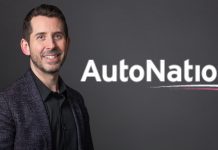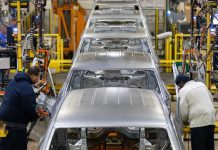Dealers lose the majority of their hottest leads within the first 15 seconds of each call. The culprit? Poor phone routing.
It’s a common misconception that the only way to provide good customer service is to point every call toward a receptionist. Unfortunately, studies show this practice leads to poor connection rates and frustrated customers. The faster a caller connects to someone who can help, the better the chance they do business with you. The easiest way to do this is by implementing a bridge — also called a phone tree or an IVR — which is the recorded greeting you hear when calling a business.
You may think, “My receptionist answers every call!” Sure, but answer rate is not connection rate. Ensure callers are quickly connected to a qualified agent — someone who can actually help.
A SIMPLE NUMBERS GAME
Implementing a bridge has helped dealers connect more callers, book more appointments, and drive more sales — without spending a nickel.
One of our Long Island Honda dealers without a bridge was connecting 55 percent of callers to someone who could help — that means 45 percent of callers were stranded hoping to speak with an employee.
The dealership built a custom bridge that separated Service, Sales, and Parts callers. The dealer soon realized the biggest culprit of stranded callers was its Sales department. Callers who selected the Sales extension only connected to a qualified at 46 percent! The bridge helped the dealer improve their connection rate by more than 20 percent.
How would you like your Sales team speaking with 50, 75, 100 more callers each month? A Tennessee dealer asked for help connecting more calls to salespeople. We set up Cari, our bridge feature built using sophisticated artificial intelligence, which allows calls to bypass a receptionist and go directly to an available sales agent. Each sales opportunity was pointed toward an available agent with the highest Set score first. Top performing agents would get the first crack at sales leads. Not only have their agents received more sales opportunities, but they’re also booking more appointments by funneling more opportunities to their best agents.
JUST HOW MUCH DOES EXPERIENCE MATTER?
A ringing phone is more valuable than the person wandering around your showroom — that showroom shopper is already in the dealership and likely to buy. The caller is still determining which dealership would be a fit to make a purchase. In a study, 73 percent of mobile callers to a sales line were ready to buy1.
The biggest frustrations customers experience when calling a dealer are having to repeat information to multiple people and not connecting with someone who can help.3
- 49 percent reported long hold times are one of their top annoyances3
- 74 percent reported they are likely to choose another business after a poor phone experience2
- 70 percent said they’re likely to complain to others2
- 24 percent said they’re likely to complain on social media2
A positive phone experience is tied to additional revenue. Eighty percent of respondents said a positive phone experience would lead them to become repeat customers, and 60 percent admitted it would likely cause them to spend more on their current purchase.2
Unfortunately, dealers still struggle with those first 30 seconds of the call; they place callers on hold or transfer calls 68 percent of the time.3
This is where your receptionist seems to come into play. She oftenserves as a switchboard operator but doesn’t have time to handle the call volume of a typical dealership.
A bridge prevents funneling the bulk of calls through a frazzled receptionist and quickly connects each caller to the person with a financial incentive to handle the call properly.
THE CURRENT STATE OF COMPLACENCY
Most dealers don’t implement a bridge because they assume customers prefer a friendly receptionist over a friendly recording. This is a common misconception.
A receptionist at a typical dealership with no bridge might field hundreds of calls a day. Important calls often go like this: a caller asks for Bob in Sales, who doesn’t pick up. The caller is sent back to the receptionist, put on hold while she pages someone else, yet no one is available. The caller is sent to a voicemail other than Bob’s, hanging up in frustration with no message.
This caller is less likely to purchase from you, and more likely to share frustrations with someone or on social media.
Without a bridge, you don’t achieve your outcome when the receptionist is fielding every call for every department. The effective approach is to route callers as quickly as possible to someone who can help.
HOW A BRIDGE CAN TRANSFORM YOUR DEALERSHIP
Here’s what you can expect from a bridge:
- Reduce in connection time by 12-15 seconds
- Only sales calls pushed into CRM
- Agents more easily following up with sales opportunities
When callers aren’t connected easily to someone who can book an appointment, chances of winning their business decrease. You don’t need to spend loads of money on tactics to fix this. A bridge (it’s free!) allows you to do more with the leads you’re already driving, helping your team to book more appointments and sell more cars.
Footnote citations:
1. Marchex, Auto Insurance Industry Benchmarks for Digital Marketers, Fall/Winter 2016
2. Invoca, State of the Mobile Experience
3. Marchex Study, Intro to the Auto Industry, January 2017








